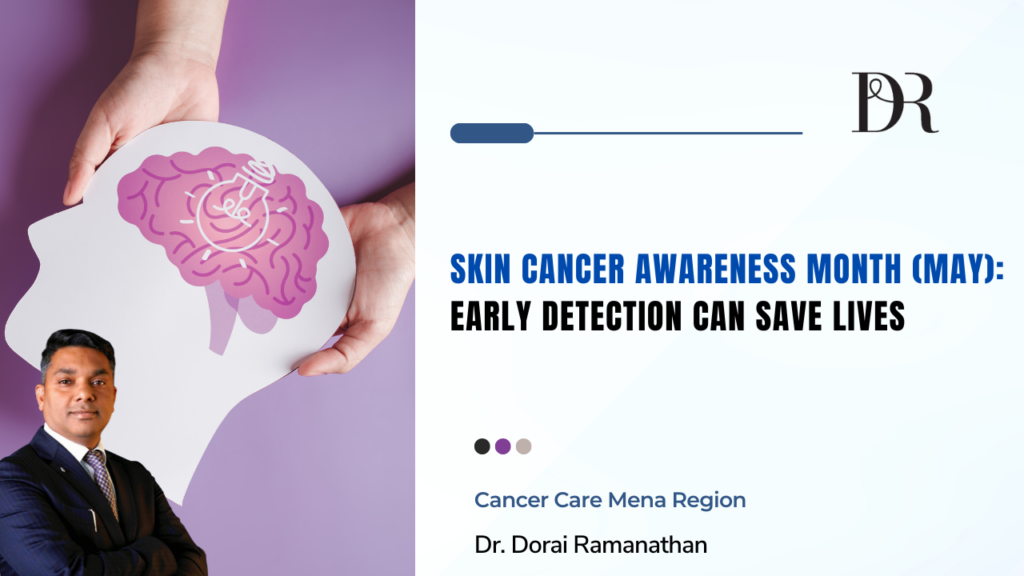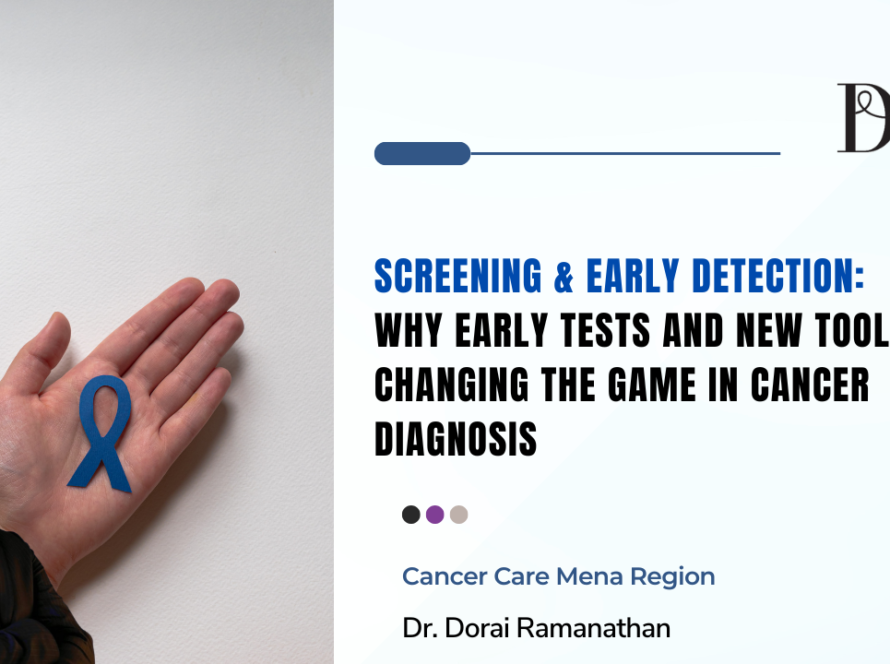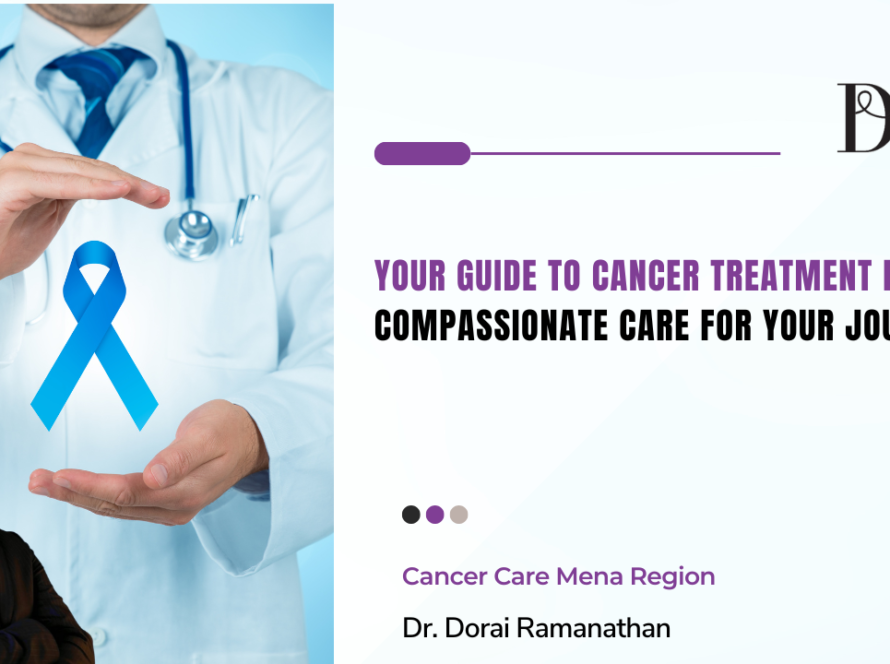
A Silent Threat Under the Sun
May marks Skin Cancer Awareness Month, a crucial time to focus on one of the most common yet preventable cancers worldwide. As someone who has dedicated years to oncology, I’ve seen firsthand how early detection can change lives.
In a city like Dubai, where the sun is almost always shining, understanding the risks of skin cancer becomes even more essential. Whether you’re enjoying the beach, working outdoors, or simply commuting, your skin is constantly exposed to UV radiation.
But here’s the good news:
Skin cancer, when detected early, is highly treatable. This month, let’s come together to spread awareness, encourage preventive habits, and learn how to recognize the warning signs.
Why Skin Cancer Awareness Matters
Skin cancer doesn’t always start with a dramatic symptom. Often, it’s just a small change on the skin—a mole that looks different, a spot that won’t heal, or a patch of skin that feels rough.
In Dubai and India, the hot climate and strong sun exposure increase the risk. According to the World Health Organization (WHO), countries with high UV indexes are at greater risk of non-melanoma and melanoma skin cancers.
“Prevention starts with awareness. When people understand the risks, they are more likely to take protective measures.”
— Dr. Dorai Ramanathan, Best Oncologist in Dubai
Understanding Skin Cancer: The Basics
Skin cancer arises when skin cells begin to grow uncontrollably. The main types include:
- Basal Cell Carcinoma (BCC):
- Most common; appears as a shiny bump or a scar-like lesion.
- Usually caused by sun exposure.
- Slow-growing and rarely spreads.
- Most common; appears as a shiny bump or a scar-like lesion.
- Squamous Cell Carcinoma (SCC):
- Appears as a scaly red patch or a sore that doesn’t heal.
- Can spread if not treated.
- Appears as a scaly red patch or a sore that doesn’t heal.
- Melanoma:
- The most dangerous form; develops in pigment-producing cells.
- Appears as a mole that changes in size, shape, or color.
- Early detection is key to treatment success.
- The most dangerous form; develops in pigment-producing cells.
ABCDE of Melanoma: Know the Warning Signs
Early detection significantly improves survival rates. Follow the ABCDE rule to check for melanoma:
- A – Asymmetry: One half of the mole doesn’t match the other.
- B – Border: Irregular, ragged, or blurred edges.
- C – Color: Different shades of brown, black, or even red and blue.
- D – Diameter: Larger than 6mm (pencil eraser size).
- E – Evolving: Any change in size, shape, or color over time.
If you notice any of these signs, book a skin screening immediately.
Prevention: How to Protect Your Skin in Dubai
Prevention is about consistency. Here are some practical steps to reduce your risk of skin cancer:
- Use Sunscreen Daily:
- SPF 30 or higher, even on cloudy days.
- Reapply every 2 hours when outdoors.
- SPF 30 or higher, even on cloudy days.
- Wear Protective Clothing:
- Long sleeves, wide-brimmed hats, and UV-blocking sunglasses.
- Choose fabrics with a high UPF (Ultraviolet Protection Factor).
- Long sleeves, wide-brimmed hats, and UV-blocking sunglasses.
- Seek Shade:
- Especially during peak UV hours (10 AM – 4 PM).
- Use umbrellas and sunshades when outdoors.
- Especially during peak UV hours (10 AM – 4 PM).
- Avoid Tanning Beds:
- Artificial UV radiation increases the risk of melanoma by up to 75%.
- Artificial UV radiation increases the risk of melanoma by up to 75%.
- Perform Monthly Self-Exams:
- Check your entire body for new moles or changes in existing ones.
- Use mirrors for hard-to-see areas.
- Check your entire body for new moles or changes in existing ones.
Psychological Insight: Why People Ignore Skin Checks
In my years of practice, I’ve observed that people often delay skin checks because:
- Fear of Diagnosis: They worry that a mole might be something serious.
- Misconception: Believing that only fair-skinned individuals are at risk.
- Lack of Awareness: Not realizing that changes could indicate cancer.
Breaking these barriers requires empathy and education. By normalizing skin checks and sharing real stories of successful treatment, we can encourage more people to take action.
Patient Story: Sharon’s Journey
One of my patients, Sharon, came to me after noticing a small, dark spot on her forearm. Initially, she thought it was just a freckle. But when it started changing color and shape, she decided to have it checked.
Diagnosis: Early-stage melanoma.
Treatment: Surgical removal and regular follow-ups.
Outcome: Full recovery and continued vigilance with skin checks.
Sharon’s story is a reminder: Listen to your body. Early detection saves lives.
My Approach: Personal and Proactive Care
At Al Zahra Hospital, Dubai, my team and I focus on comprehensive cancer care. We offer:
- Full Skin Examinations: Detailed checks for all skin types.
- Advanced Diagnostic Tools: Dermatoscopy and mole mapping.
- Patient Education: Guidance on self-checks and sun protection.
By combining medical expertise with patient-centered care, we aim to reduce the incidence and impact of skin cancer in Dubai and beyond.
Final Thoughts: Let’s Make a Difference
Skin Cancer Awareness Month is more than just a date on the calendar—it’s a call to action. Whether you’re at home, at work, or on the beach, take steps to protect your skin.
Remember, it’s not just about avoiding sunburns; it’s about safeguarding your future. Regular screenings can catch changes early, giving you the best chance at successful treatment.
If you notice a suspicious mole or experience any changes, don’t wait. Book a consultation with me at Al Zahra Hospital, Dubai.
Let’s make skin safety a habit, not a second thought.



